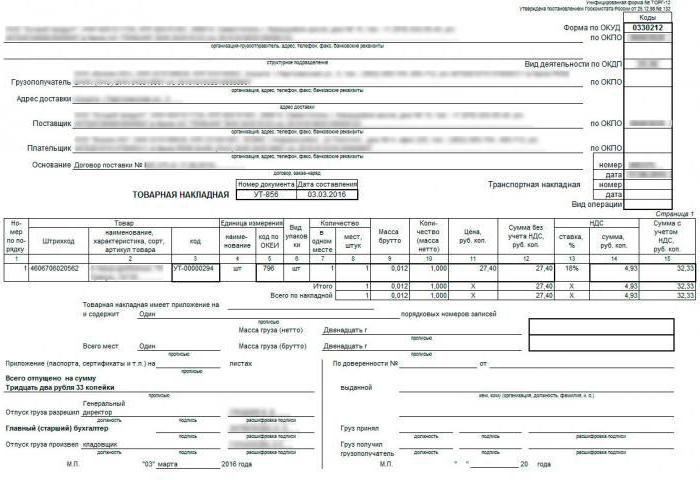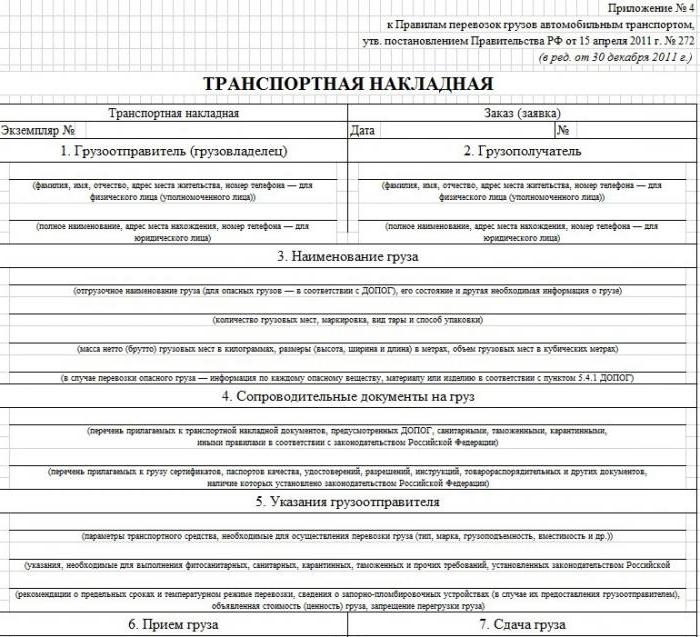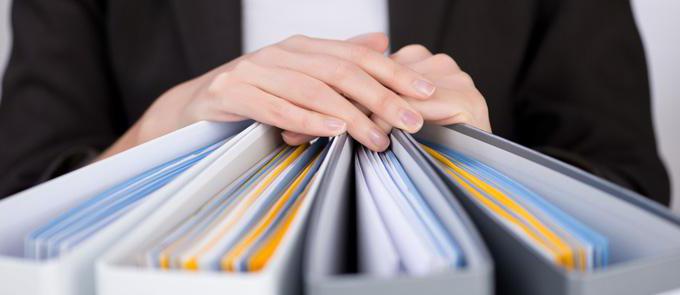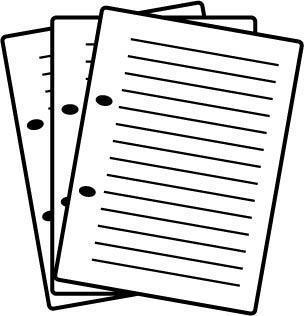The activities of state and commercial organizations are formalized in accordance with applicable law. In the mass of office workflow today we are interested in strict reporting documents, namely invoices. These are important papers that contain complete, comprehensive information about the consignor, consignor, and consignee. There are different invoices, and all have drawing up features. We’ll talk about them.
What are invoices for?
The presence of an invoice is a prerequisite for the transport of goods, regardless of what type of transport we use. The document is intended to reflect information about the sender and the recipient, as well as to simplify the resolution of various contentious issues.
Varieties of invoices
An invoice is a document whose format is established by law and is not subject to change. However, there are several types of invoices for different types of cargo and different transport. The document itself has various nuances of compilation and includes several sections. The most informative is the table containing information about the product itself.
Packing list
To perform the operations of issuing and receiving inventory items, a waybill is used, which reflects the following positions: name of the organization that issued the document, number, date, last names and positions of the employees who issued and received the goods, their signatures, name of goods, unit price of goods and total amount, grade, quantity and other characteristics. When preparing financial statements, all invoices are taken into account and must be reflected in the documents. When is invoice tracking still required?
Who is tracking?
The waybill is also of interest to inspection bodies, for example, to the tax service, which carries out a mandatory audit. In this case, an incorrectly executed invoice can have far-reaching, but sad consequences. Also, the presence of a waybill can be checked during the transportation of goods, for example, traffic police inspectors will necessarily carry out a check of trucks along the route, and accordingly, they need to show a waybill for the goods being transported. Naturally, the information that is reflected in the document must correspond to what is in the truck. The situation is similar with transportation by other means of transport. Without an invoice, the goods simply will not be loaded into transport. There are quite a number of varieties of such documents. Each type of waybill has its own characteristics in the preparation, we advise you to familiarize yourself with them in advance. For example, there are special types of invoices used in the transportation of livestock products.
Other types of invoices
As we found out, the consignment note is a required document during transportation. In addition to commodity, other varieties of this document apply. When selling, an invoice is used when the goods are sold without transportation or delivery. The next type is the document that the company draws up upon the arrival of various assets on the balance sheet.
A special type is the return invoice. It is drawn up in a situation where the cargo was damaged and has a non-marketable appearance upon arrival. A return note is drawn up in much the same way as a bill of lading, with one exception. All the nuances should be thought out in advance, avoiding errors in the preparation. In the case of an inventory draw up an invoice for re-counting.It includes information on all actions committed in the process of re-counting. Further, there is such a type of document as a marriage rejection invoice, which is compiled upon receipt of the defective product, if its use is impossible. The invoice number is a very important distinguishing feature.
The marriage invoice confirms the fact of damage, avoids contentious issues with suppliers. In addition, it is the basis for writing off assets. The main document regulating the relationship during the carriage of goods between all interested parties (sender, recipient, carrier) is the bill of lading. It should be noted that this document is used only in the case of transportation by land or river transport. When shipping, a bill of lading is issued. Freight by invoice number is easy to track.
The transport document is compiled by the consignor with the name of the specific recipient when using any type of transport for registration and certification of the contract for the carriage of goods. For the accuracy and correctness of the information specified in the invoice, the shipper is responsible, the carrier, in turn, has the right to verify this information. Throughout the route of the goods, it is accompanied by a bill of lading, and it is issued to the recipient at the destination with the goods.
It contains all the important data related to the goods being transported (mass, name, time of reception for transportation and time of arrival at the destination, etc.), necessary for the formation of the evidence base, if you need to certify the conclusion of the contract of carriage and its actual performance. In case of claims (shortage, spoilage, damage, delay, delays, etc.), the bill of lading is presented in the prescribed manner. The legal regulation when using railway transport is formed on the basis of legislative norms on railways. International rail transport is carried out on the basis of international freight traffic agreements, the Convention on International Rail Transport (COTIF) as amended in 1980 and other documents.
Rail transportation
From the moment the station accepts the goods for dispatch, the contract of carriage is considered concluded. The original consignment note is taken from the sender and sent along with the freight along the route. The sender has a duplicate, according to which he receives the goods at the destination. If a duplicate of the waybill is lost, the goods are issued at the destination only after the expiration of the normative period and publication in the media that the document has been lost. All the above information contains the following official documents: general charter of Russian railways, trade charter and charter of commercial litigation. The invoice for the goods is also a settlement document, since the corresponding column of the document contains information on paid freight charges. Tracking a consignment note is a fairly simple process.
What is an invoice for?
The invoice is drawn up in accordance with applicable law and allows you to solve several problems at once. First of all, it documents the information on the release of goods from the warehouse. Using the invoice simplifies the maintenance of financial statements. It is also important that this is a document of strict reporting, with which you can verify the accuracy of the information provided to the tax. Well, the last item on this list (in order, but not in importance) is the possibility of use in court.
Settlement of contentious issues
The last point for organizations can be of utmost importance. The presence of such a document allows you to resolve most controversial issues without bringing the case to court.For example, tracking cargo by waybill number may be necessary if the cargo is lost.
If the trial still takes place, then the waybill allows you to prove the truth and justify the claim. Despite the abundant amount of information and the undoubted importance of the bill of lading, its filling does not require specialized knowledge, and this explains the widespread distribution of this document.
Usually in each organization there are template documents of commodity and other waybills that contain unchanged information, such as details. If the company has customers, work with which is carried out on an ongoing basis, then a template is developed specifically for each of them. In this case, the issuance of relevant documents is even more simplified.
Errors in the invoice
However, due to banal indiscretion or a simple rush in such a simple process, mistakes often occur. This is unacceptable, there should be no errors in the invoice, even minor ones. This is a strict reporting document. If the error was detected after the goods were sent to the buyer, a new document is formed and then signed. These stringent requirements provide protection against fraudulent transactions.
What is this invoice? We have answered this question.